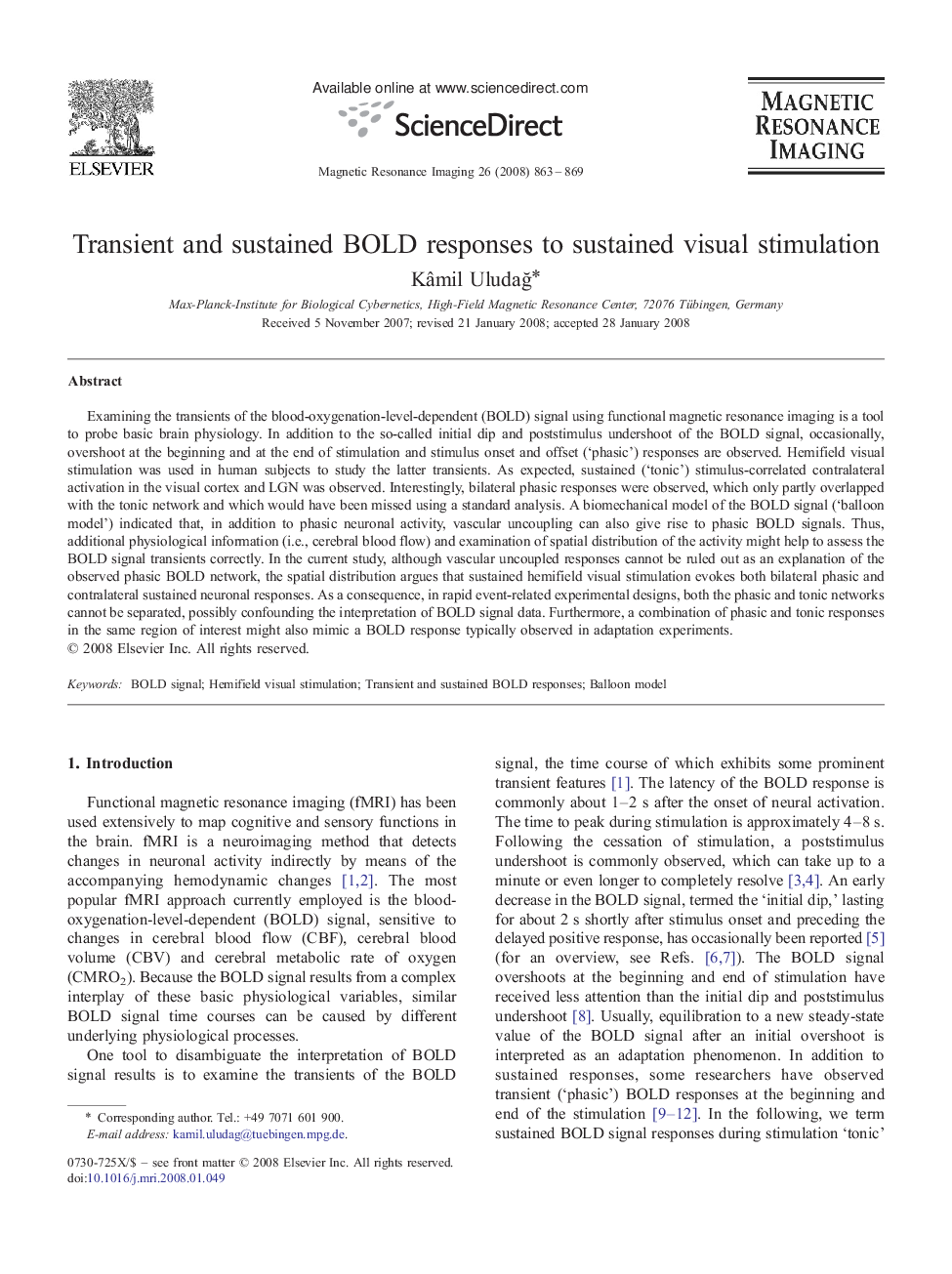| Article ID | Journal | Published Year | Pages | File Type |
|---|---|---|---|---|
| 1807567 | Magnetic Resonance Imaging | 2008 | 7 Pages |
Examining the transients of the blood-oxygenation-level-dependent (BOLD) signal using functional magnetic resonance imaging is a tool to probe basic brain physiology. In addition to the so-called initial dip and poststimulus undershoot of the BOLD signal, occasionally, overshoot at the beginning and at the end of stimulation and stimulus onset and offset (‘phasic’) responses are observed. Hemifield visual stimulation was used in human subjects to study the latter transients. As expected, sustained (‘tonic’) stimulus-correlated contralateral activation in the visual cortex and LGN was observed. Interestingly, bilateral phasic responses were observed, which only partly overlapped with the tonic network and which would have been missed using a standard analysis. A biomechanical model of the BOLD signal (‘balloon model’) indicated that, in addition to phasic neuronal activity, vascular uncoupling can also give rise to phasic BOLD signals. Thus, additional physiological information (i.e., cerebral blood flow) and examination of spatial distribution of the activity might help to assess the BOLD signal transients correctly. In the current study, although vascular uncoupled responses cannot be ruled out as an explanation of the observed phasic BOLD network, the spatial distribution argues that sustained hemifield visual stimulation evokes both bilateral phasic and contralateral sustained neuronal responses. As a consequence, in rapid event-related experimental designs, both the phasic and tonic networks cannot be separated, possibly confounding the interpretation of BOLD signal data. Furthermore, a combination of phasic and tonic responses in the same region of interest might also mimic a BOLD response typically observed in adaptation experiments.
